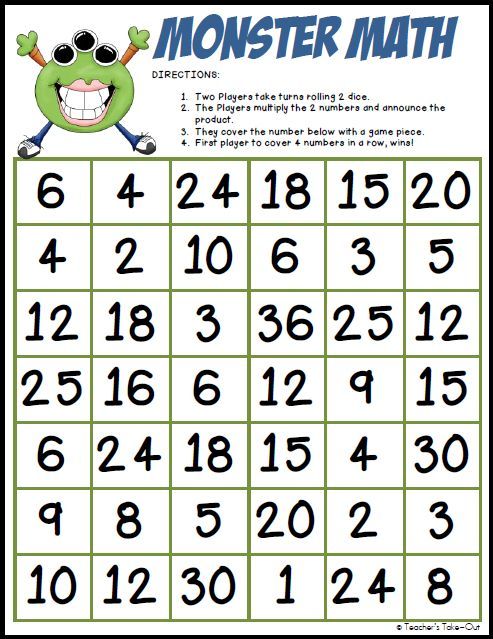
The Hodson Trust gives you the opportunity to be a certified teacher. The program provides financial support for teachers. To qualify for a Hodson Trust grant, you must be enrolled in a teacher preparation program or be a teacher in a high-need school. You must continue teaching for at least 4 years after you graduate. When you fulfill your service obligation, the funds from TEACH will be converted to a loan.
Teachers of Tomorrow Program
For $295, a prospective teacher with a bachelor's degree can enroll in the Teachers of Tomorrow Program. Students will be exposed and asked to present for a 30--40 minute presentation. Students will then complete a 10-question quiz, a homework assignment, and join a discussion among other Christian schools. Participants will also need to complete weekly reflection reports. Some programs will also require students to participate in special projects.
Teachers of Tomorrow Program is a well-known alternative license provider that has been around for over 25 years. Its innovative programs have produced three of the nation's Teacher of the Year. The program offers flexible, personalized certification that allows candidates to pursue a new career path. This program helps teachers create a solid foundation for the future and attracts people who are looking for new challenges. The program helps prepare candidates for careers in teaching by fostering collaboration between the school district, candidates, and training.

Teachers of Tomorrow Grant Program
Teachers of Tomorrow Grant Program gives incentives to teachers who want to teach in schools that have teacher shortages. These schools are experiencing shortages in subjects such as English, mathematics, science, and social studies. The program provides incentives to both novice and experienced teachers. For up to $3,000.00 per year, it can be extended for four more years. The program is limited to NYC public schools teachers. Each year, the amount of awards will vary depending on how much funding is available.
Unique to the Teachers of Tomorrow Grant Program, is its partnership and support from UESF. Both organizations invested in the program's success and offered grant-writing support and mentoring. Together, they formed a working group, including representatives from UESF and SFUSD, that discussed the best ways to support the residency graduates. They ran workshops for residency students on how to avoid being laid off. As a result, funding was granted to several teachers from participating schools.
Teachers of Tomorrow Fellowship Programme
Teachers can use the Teaching Fellows program to help them develop and implement innovative teaching techniques. This year's fellows will create a unit that will be integrated into the high school curriculum. Teachers are essential to opening the world of possibilities for students and helping them gain the skills and knowledge they need. Teachers will learn effective teaching techniques and be qualified to teach special-education. Fellows are eligible to be licensed through the DC Office of State Superintendent of Education once they have completed this program.
Ford Foundation sponsors the Fellowship Program. Scholarships are awarded to aspiring educators who have demonstrated a commitment to advancing education in Michigan. Scholarship recipients must be able to demonstrate academic excellence in mathematics and intend to teach at the high school or college levels. They also need to submit a Teachers of Tomorrow Scholarship Essay. Students in their first year of teaching can apply for the Teachers of Tomorrow Fellowship Program. To apply, students must complete a one-page essay describing their commitment to improving education in the state. Part-time students may also be eligible for this award.

Hodson Trust Teacher Fellowship program
Teachers from eligible states are eligible to apply for the Hodson Trust Teacher Fellowship program. Those selected for the Fellowship must be working in one of the participating states. A person's financial need is sufficient to renew a Fellowship for eight semesters. International students are also eligible for financial aid. The annual award for eligible students can be up to $657. The federal requirements for this fellowship are strict. Please click this link to apply.
Two types of fellowships are offered by the Hodson Trust. The one is for short term projects, which can include book-length work; the other is available for longer-term project. For the short-term fellowships applicants must focus on projects that have a connection to the Americas since 1830. It is also a good idea to plan to teach in public school. Long-term fellowships are awarded with $50,000 stipends. This program also helps teachers improve their professional skills.
FAQ
What is the difference between public and private schools?
Public schools are free for all students. They offer education from kindergarten to high school. Private schools charge tuition fees. They provide education for students from pre-school through college.
Charter schools can also be found, which are privately owned but are not publicly funded. Charter schools don't follow traditional curricula. Instead, they give their students more freedom to learn what interests them.
Charter schools are popular with parents who believe their children should receive quality education regardless of their financial status.
How do you get scholarships?
Scholarships are grants that can be used to pay college costs. There are many kinds of scholarships. These are:
-
Federal Grants
-
State Grants
-
Student Loans
-
Work Study Programs
-
Financial Aid
Federal grants are directly issued by the U.S. government. Federal grants are subject to certain conditions. You must, for example, demonstrate financial need.
Each state offers state grants. State grants can be offered by each state based upon financial need, while others are given for specific purposes.
Student loans are issued by banks and other lending institutions. Students often borrow money to pay for tuition and living expenses.
Employers are encouraged to employ qualified students through work-study programs. Employers must pay at least the minimum wage to their employees.
Financial aid covers the majority or all of the tuition costs for low-income families.
How do I select my major?
Students choose their majors based upon their interests. Because they find it easier to study something they love, some students choose to major on a subject that they really enjoy. Some people want to work in a field that has no job opportunities. Still, others choose a major because they hope to earn money during their studies. Whatever your reasons may be, you should consider what job you might enjoy after graduation.
There are many ways to get information about different fields of study. You can talk to family members or friends about your experiences in these areas. Check out newspapers and magazines for possible careers. Ask your guidance counselor about possible career options. Visit your community center or library to find out more about Career Services. You can borrow books about various topics from the public library. Use the Internet to find websites related to particular careers.
What is homeschooling, exactly?
Homeschooling refers to a way in which children are taught at home by their parents. It's also known as home education, self-education, and home educating.
Homeschooling is a great option for families who want to teach their kids at home. This method allows children to receive a quality education from home.
Children are educated by their parents from the time they are born until they reach high school. They decide what subjects and how long they should study. The student learns everything on his/her own time.
When to start teaching children is up to the parents. Many schools recommend that children enroll in classes between the ages four and twelve. However, some families choose to wait to begin teaching their children until they reach kindergarten.
Parents may use any number of resources to guide them through the curriculum. The lessons can be learned from videos, books and magazines as well as websites.
Many families find homeschooling a great fit for their busy schedules. The parents can spend more time together than traditional public school teachers.
Who can homeschool?
Anyone can homeschool. No special qualifications are required.
High school graduates are qualified to teach their children. Many parents opt to teach their older children at college.
Parents with less formal education can learn how to teach their children.
Parents can become certified teachers after completing certain requirements. These requirements can vary from one state to the next.
Some states require all homeschooled students to complete a test before graduation. Others do not.
Parents who want to homeschool their children must register them with the local school district.
This involves filling in paperwork and submitting it the school board.
After registration, parents can enroll their children at public or private schools.
Some states allow parents to homeschool, but they must register their children with the government.
If you live in one of these states, you will be responsible for ensuring your children meet the requirements of the state's compulsory attendance law.
What is an alternate school?
An alternative school is designed to give students with learning problems access to education, by supporting them with qualified teachers who understand their unique needs.
An alternative school provides children with special educational needs the opportunity to learn in a regular classroom setting.
In addition, they are also given extra help when needed.
Alternative schools aren't just for those who were excluded from mainstream school.
They are available to all children, regardless of their ability or disability.
Statistics
- Data from the Department of Education reveal that, among 2008 college graduates, 92.8 percent of humanities majors have voted at least once since finishing school. (bostonreview.net)
- In most developed countries, a high proportion of the population (up to 50%) now enters higher education at some time in their lives. (en.wikipedia.org)
- They are also 25% more likely to graduate from high school and have higher math and reading scores, with fewer behavioral problems,” according to research at the University of Tennessee. (habitatbroward.org)
- Globally, in 2008, around 89% of children aged six to twelve were enrolled in primary education, and this proportion was rising. (en.wikipedia.org)
- And, within ten years of graduation, 44.1 percent of 1993 humanities graduates had written to public officials, compared to 30.1 percent of STEM majors. (bostonreview.net)
External Links
How To
What is vocational Education?
Vocational Education, which is an educational system that prepares high school students for jobs after college or high school, provides them with training in specific skills required for a job (e.g. welding). This includes apprenticeship programs and on-thejob training. Vocational Education is different than general education. It focuses on specific careers and not learning broad knowledge for the future. Vocational training is not designed to prepare individuals for university but rather to assist them in finding jobs upon graduation.
Vocational education is available at all levels of education, including primary, secondary, high school, college, universities, technical institutes as well as trade schools, community colleges and junior colleges. Many specialized schools are available, including nursing and culinary schools, law schools medical and dental schools, veterinary medicine school, veterinary medicine schools, firefighting training schools, police academies, military academy, and other military schools. Many of these provide both academic instruction and practical experience.
Over the past decade, a number of countries have made substantial investments in vocational education. These include Australia, Denmark and Finland, Germany. However, the effectiveness of vocational education remains controversial. Some critics say it does not improve students' employability. Other argue that it prepares them well for life beyond school.
According to the U.S. Bureau of Labor Statistics 47% of American adults have a postsecondary certificate. This number is higher for those with higher education. 71% of 25-29-year-olds have a bachelor's or higher degree and are employed in areas that require postsecondary credentials.
According to the BLS, nearly half of America's adult population held at least one postsecondary credential in 2012. About one-third of Americans held a two-year associate degree, while about 10 percent held a four-year bachelor's degree. One in five Americans holds a master’s degree or doctorate.
The median annual salary for people with a bachelor's was $50,000. This compares to $23,800 for those who don't have a degree. The median income for those with advanced degrees was $81,300.
For those who did not complete high school, the median wage was only $15,200. For those who did not complete high school, the median annual salary was only $15,200.